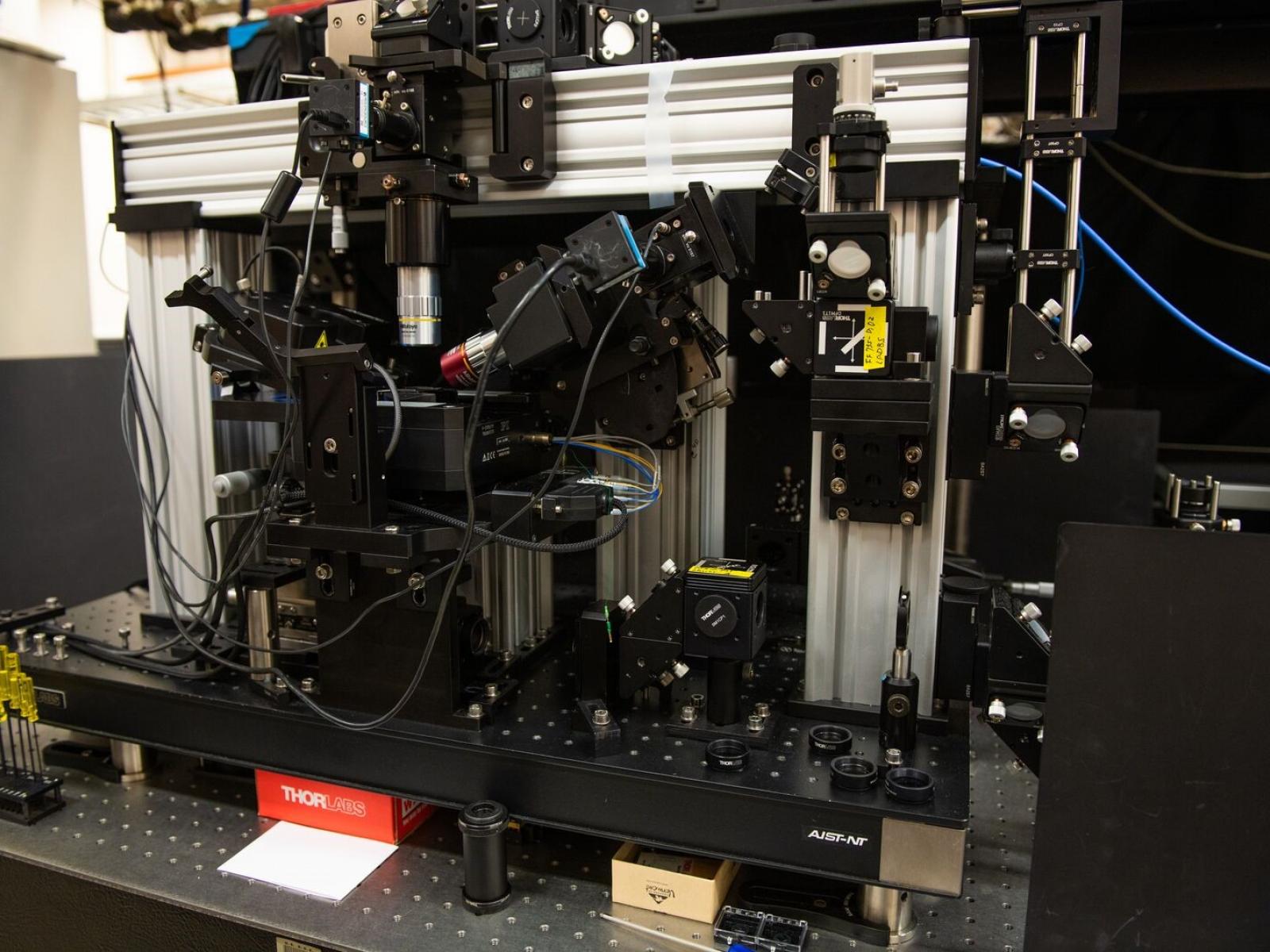Tip-Enhanced Optical Nano-Imaging and Nano-Spectroscopy (TEON)
United States

Photo by Andrea Starr | Pacific Northwest National Laboratory
The Tip-Enhanced Optical Nano-Imaging and Nano-Spectroscopy (TEON) platform combines atomic force microscopy (AFM) with (non)linear optical microscopy and spectroscopy. Several optical measurements are possible using the broad range of light sources that are coupled to this setup, including continuous wave and pulsed lasers. In one mode of operation, correlated topographic and optical measurements are conducted to characterize solid–air and solid–liquid interfaces encountered in the biological, catalysis, and energy sciences. The optimal flexibility of the optical system that allows top, side, and bottom excitation and/or collection is useful in this regard because it facilitates addressing samples with different requirements and analytes with distinct physiochemical properties. In another mode of operation, the AFM probe becomes an active part of the optical measurements. Here, using the so-called tip-enhanced Raman and photoluminescence techniques allows chemical and chemical reaction imaging with few-nanometer spatial resolution under ambient laboratory conditions. Very recently, we also implemented tip-enhanced nonlinear optical approaches to allow time-resolved and/or coherent optical measurements that track population and coherent dynamics at the nanoscale.
Research Application
- This platform is used for multimodal topographic and optical characterization of complex biological systems, including microbial communities, plants, and their combinations.
- This platform is also used for chemical and chemical reaction imaging at complex interfaces comprised of molecular systems dynamically interacting with plasmonic metal nanostructures and nanoparticles.
- The static and dynamic properties of low-dimensional quantum materials, including transition metal dichalcogenides, are routinely analyzed using this setup.
- The TEON capability is constantly and actively developed to enable novel state-of-the-art nanoscale characterization methods, most recently including coherent optical imaging with few-nanometer spatial resolution under ambient laboratory conditions.